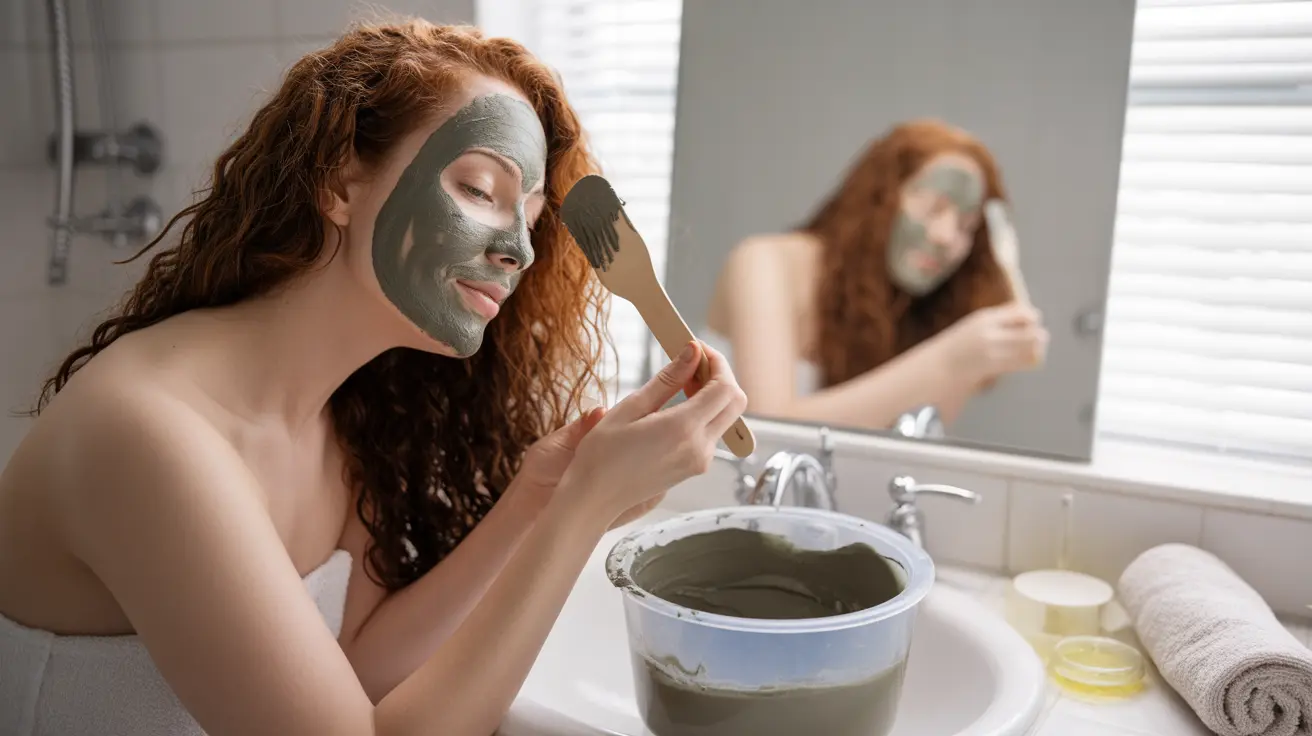Bentonite clay has emerged as a powerful natural ingredient for hair care, offering multiple benefits for those seeking to enhance their hair's health and appearance. This mineral-rich clay, formed from volcanic ash, has been used for centuries in beauty treatments and is now gaining recognition for its remarkable effects on hair and scalp health.
Whether you're dealing with product buildup, excess oil, or seeking better curl definition, bentonite clay might be the solution you're looking for. Let's explore how this versatile ingredient can revolutionize your hair care routine.
Understanding Bentonite Clay's Hair Benefits
Bentonite clay possesses unique properties that make it particularly effective for hair care. When activated with liquid, it creates a negatively charged surface that attracts positively charged impurities, toxins, and excess oils. This natural detoxifying ability helps cleanse both the hair and scalp thoroughly.
The clay's mineral content, including calcium, magnesium, and silica, can help strengthen hair strands and promote overall hair health. These minerals may help reduce breakage and improve hair's elasticity over time.
How to Create and Apply a Bentonite Clay Hair Mask
Gathering Your Ingredients
For an effective bentonite clay hair mask, you'll need:
- 1/2 cup bentonite clay powder
- 1/2 cup apple cider vinegar or water
- Plastic or wooden mixing bowl
- Non-metal mixing utensil
- Plastic or shower cap
Application Steps
Follow these steps for the best results:
- Mix the clay with liquid until smooth
- Section clean, damp hair
- Apply mixture from roots to ends
- Cover with a plastic cap
- Leave on for 15-20 minutes
- Rinse thoroughly with warm water
- Follow with a moisturizing conditioner
Benefits for Different Hair Types
For Curly Hair
Curly hair types often experience significant benefits from bentonite clay treatments. The clay can help define curl patterns, reduce frizz, and enhance natural texture. It works by removing buildup that can weigh down curls while helping to seal the hair cuticle.
For Oily Hair
Those with oily hair can benefit from bentonite clay's natural absorption properties. The clay effectively removes excess sebum and product buildup without stripping the hair of necessary moisture.
Safe Usage Guidelines
While bentonite clay is generally safe for most hair types, it's important to follow these guidelines:
- Don't use metal utensils or bowls
- Perform a patch test before full application
- Don't leave the mask on longer than recommended
- Use no more than once or twice per week
- Always moisturize after treatment
Frequently Asked Questions
How does bentonite clay help cleanse and moisturize hair?
Bentonite clay cleanses hair by drawing out impurities and excess oils through its negative electrical charge. While it removes buildup, it also helps balance moisture levels in the hair and scalp, leaving hair clean but not stripped.
What is the best way to apply a bentonite clay mask for hair at home?
Mix bentonite clay with apple cider vinegar or water in a non-metal bowl until smooth. Apply to damp hair in sections, ensure complete coverage, and leave on for 15-20 minutes before rinsing thoroughly. Always follow with a moisturizing conditioner.
Are there any side effects or risks of using bentonite clay on the scalp?
While generally safe, some people may experience dryness or scalp sensitivity. Always do a patch test first, and don't use more frequently than recommended. Those with extremely dry or sensitive scalps should use cautiously.
Can bentonite clay improve curl definition and reduce frizz in curly hair?
Yes, bentonite clay can enhance curl definition by removing buildup that weighs down curls and helping to seal the hair cuticle. This results in better-defined, less frizzy curls with improved bounce and shape.
How often should I use bentonite clay masks on my hair for best results?
For most hair types, using a bentonite clay mask once every 1-2 weeks is optimal. Those with very oily hair might benefit from weekly treatments, while those with dry or color-treated hair should limit use to once every 2-3 weeks.




